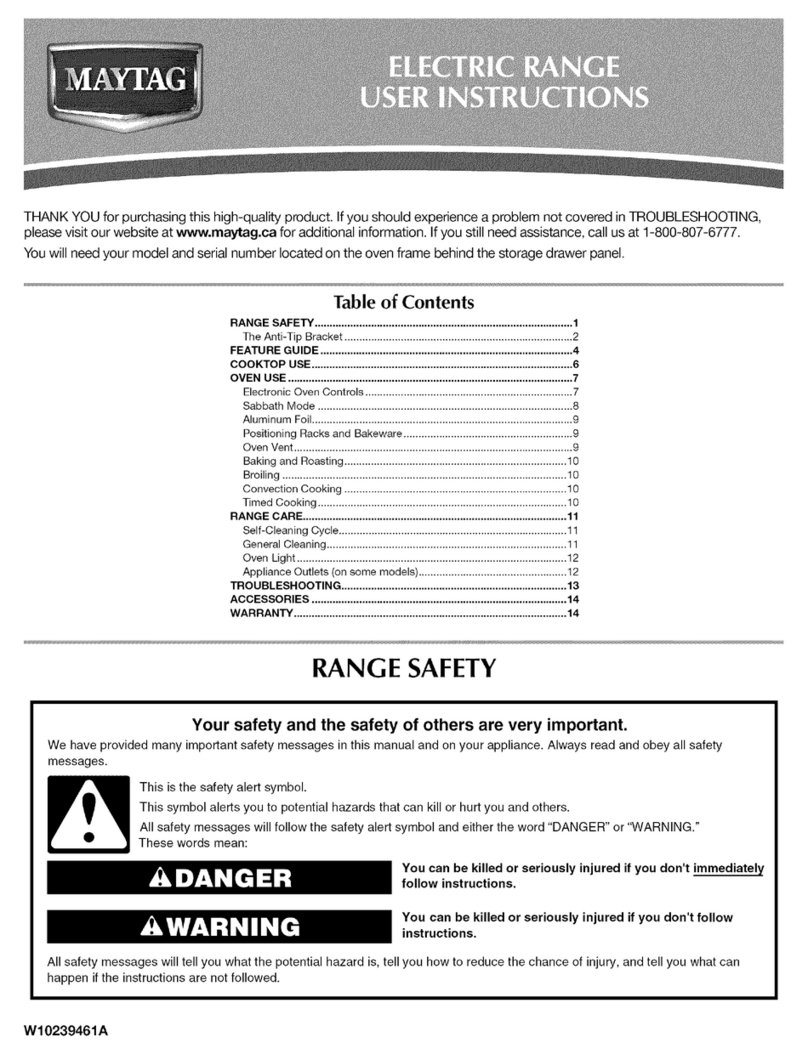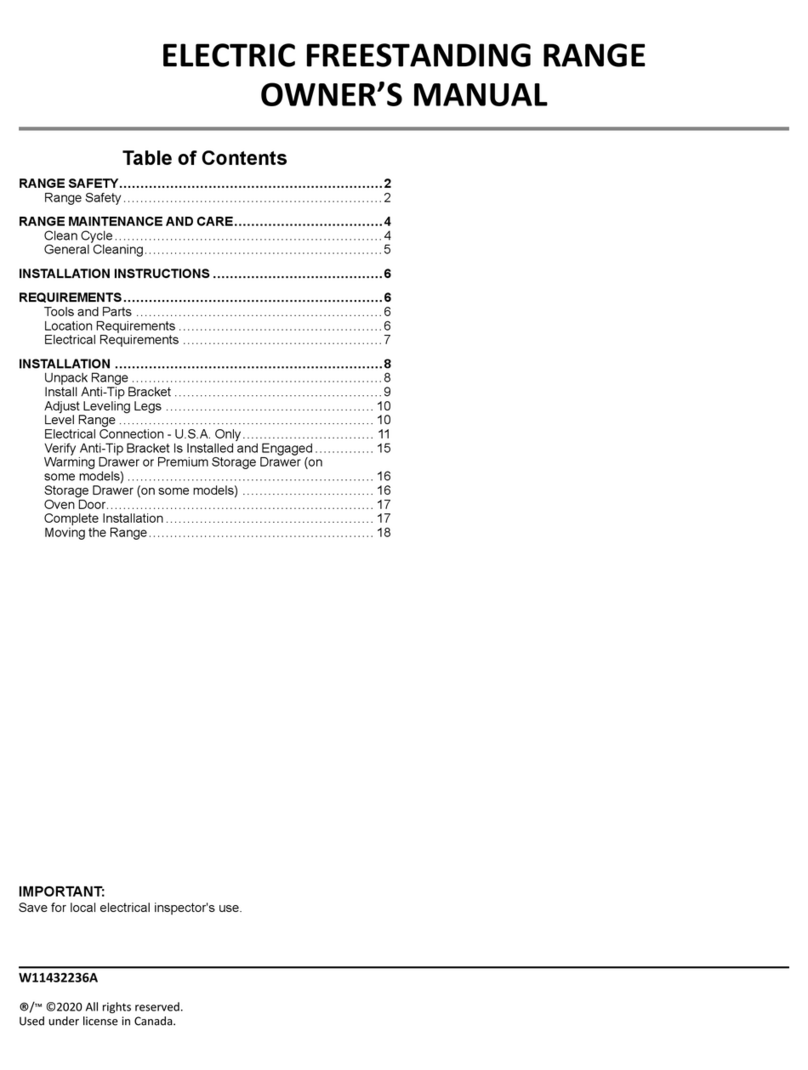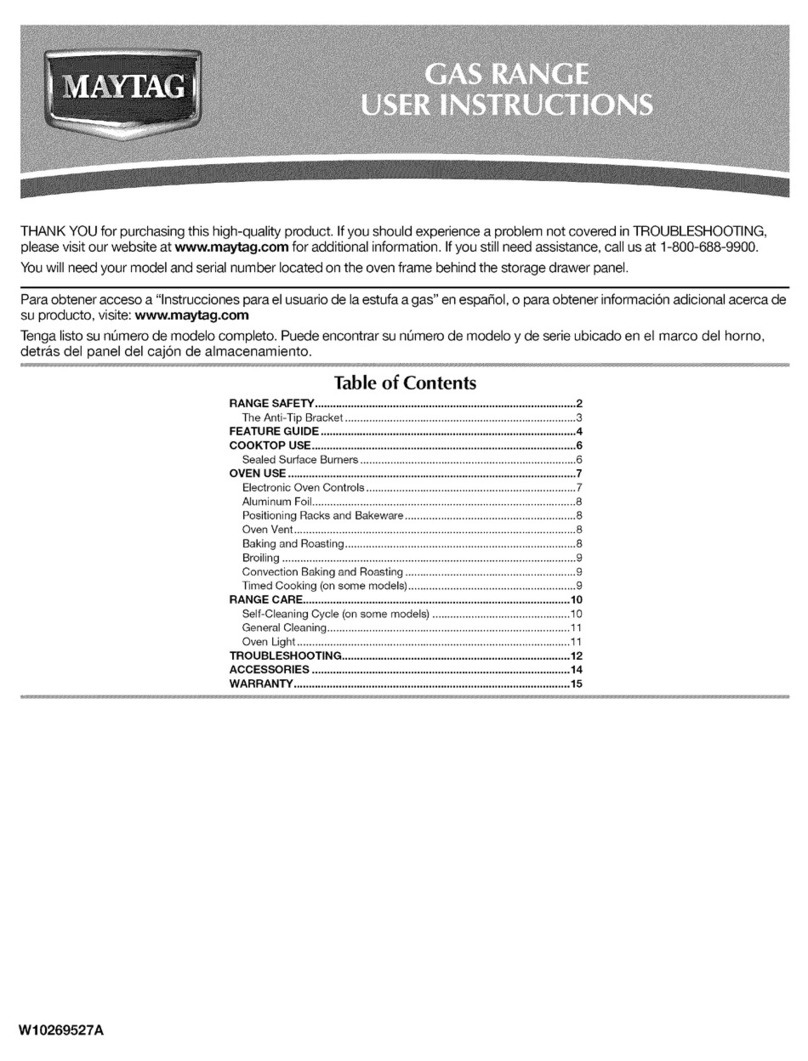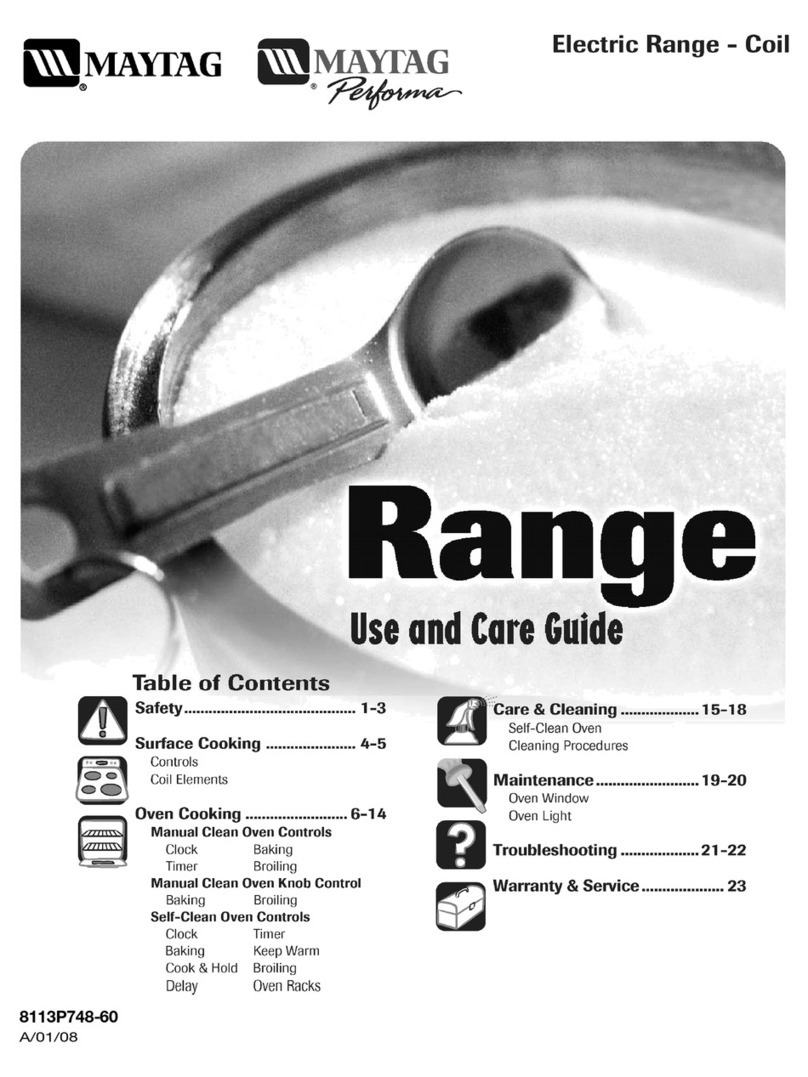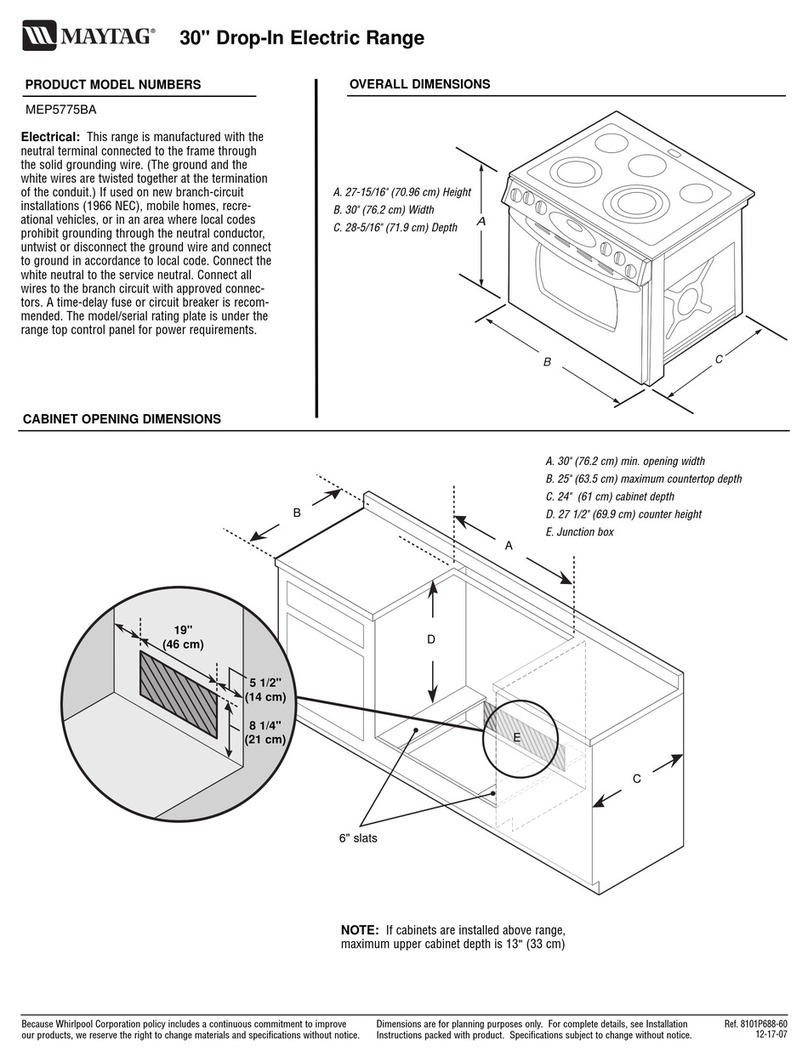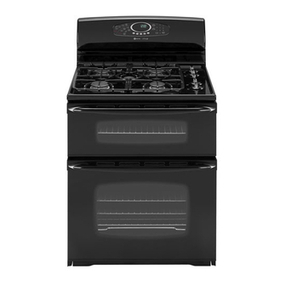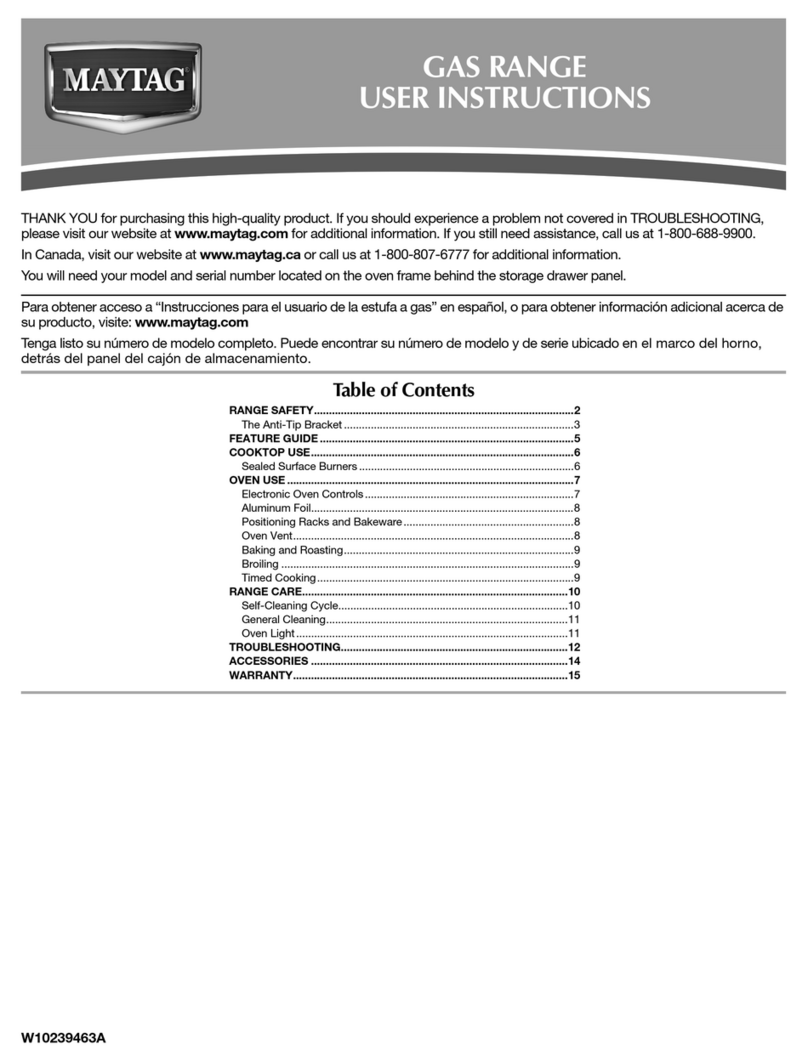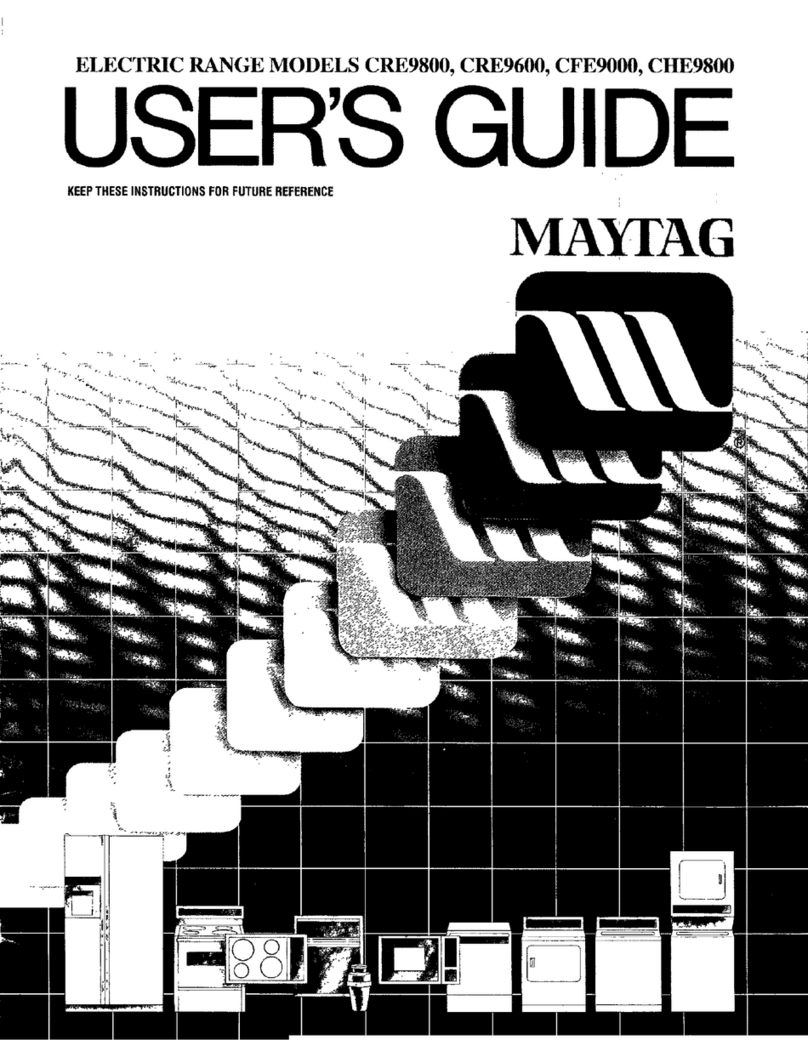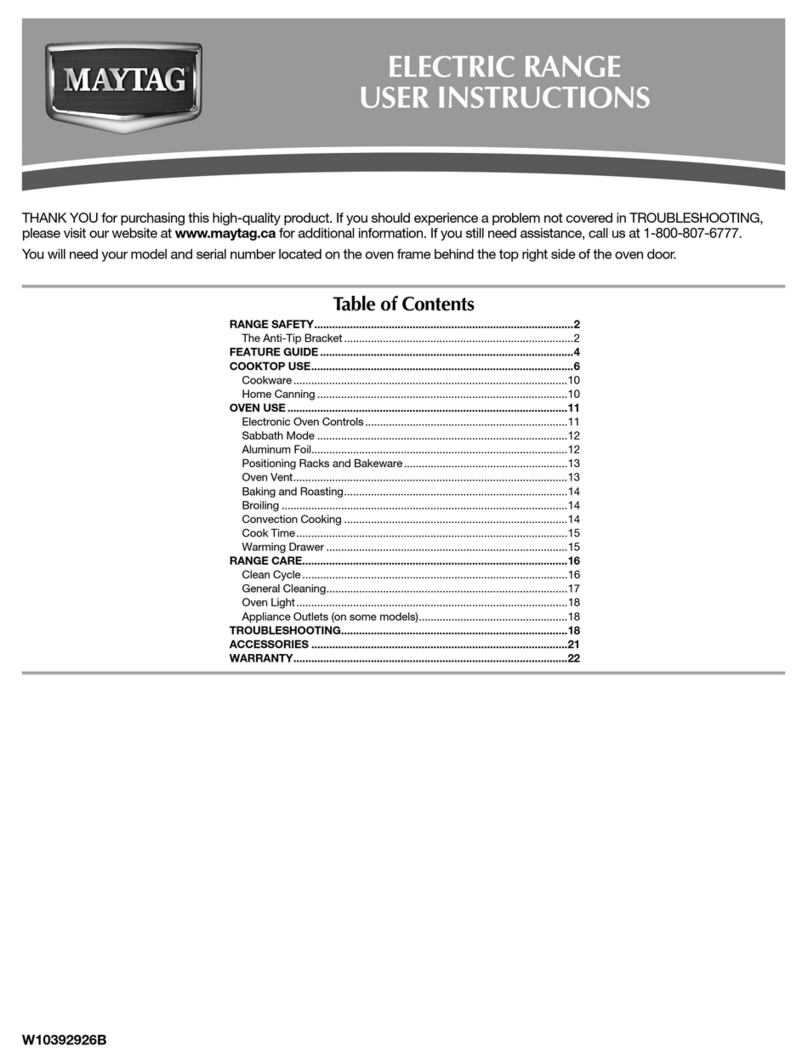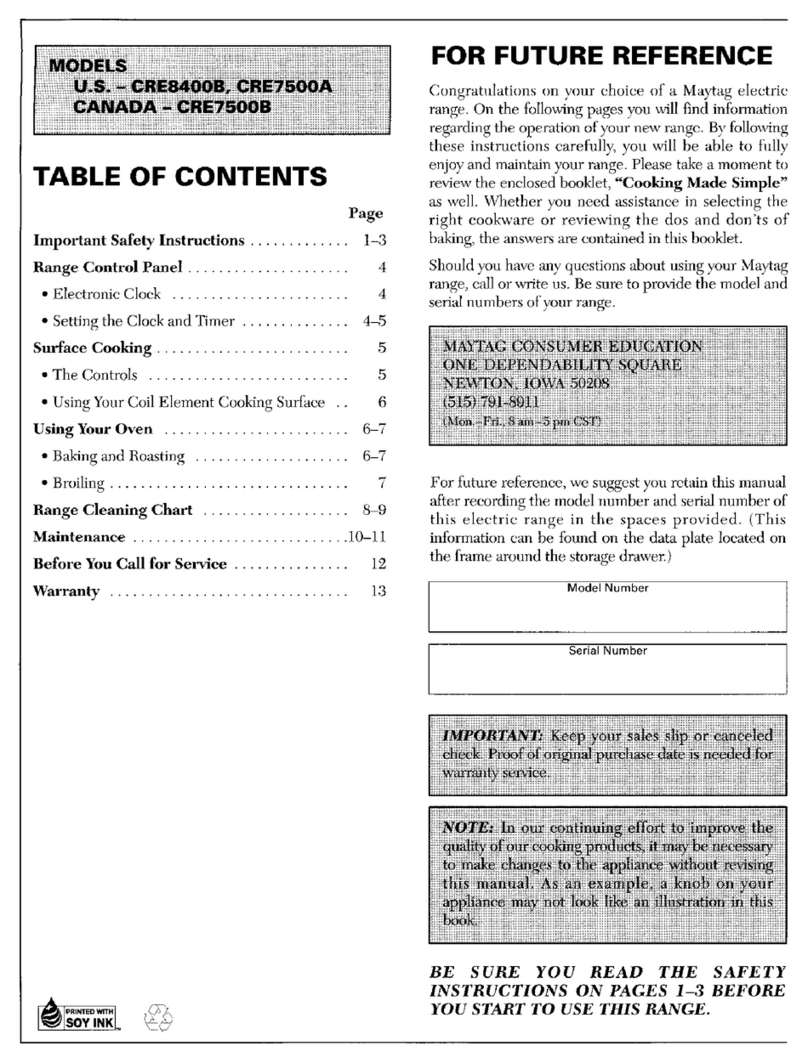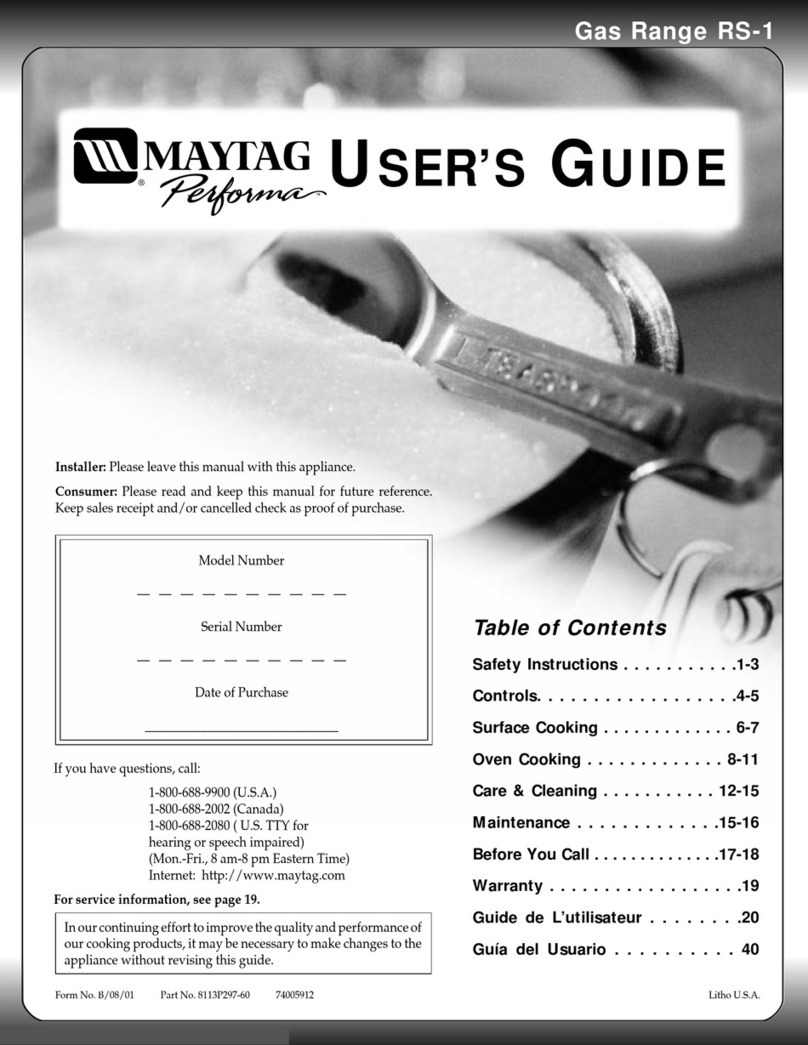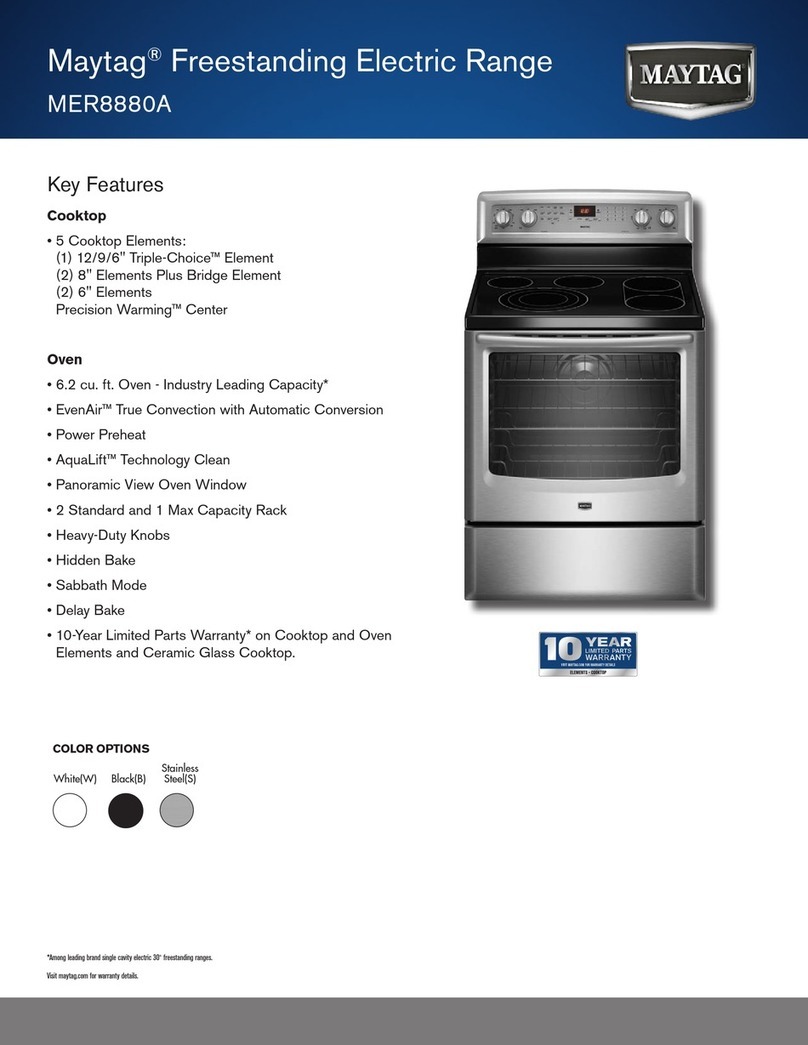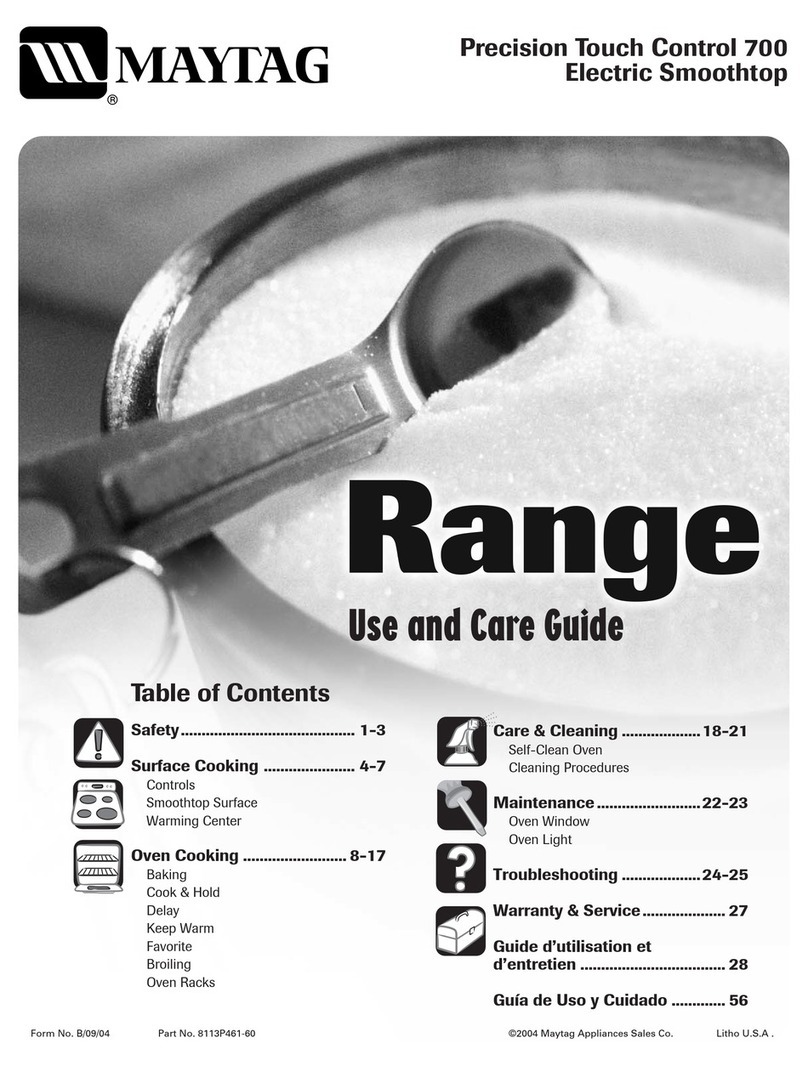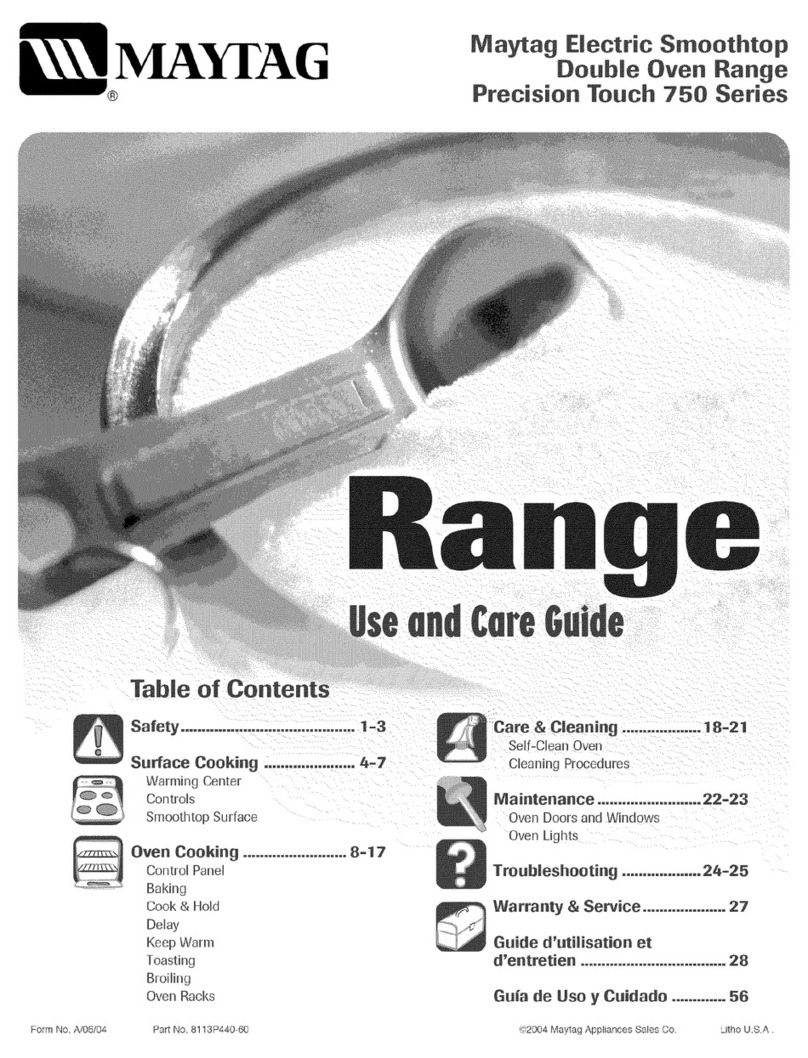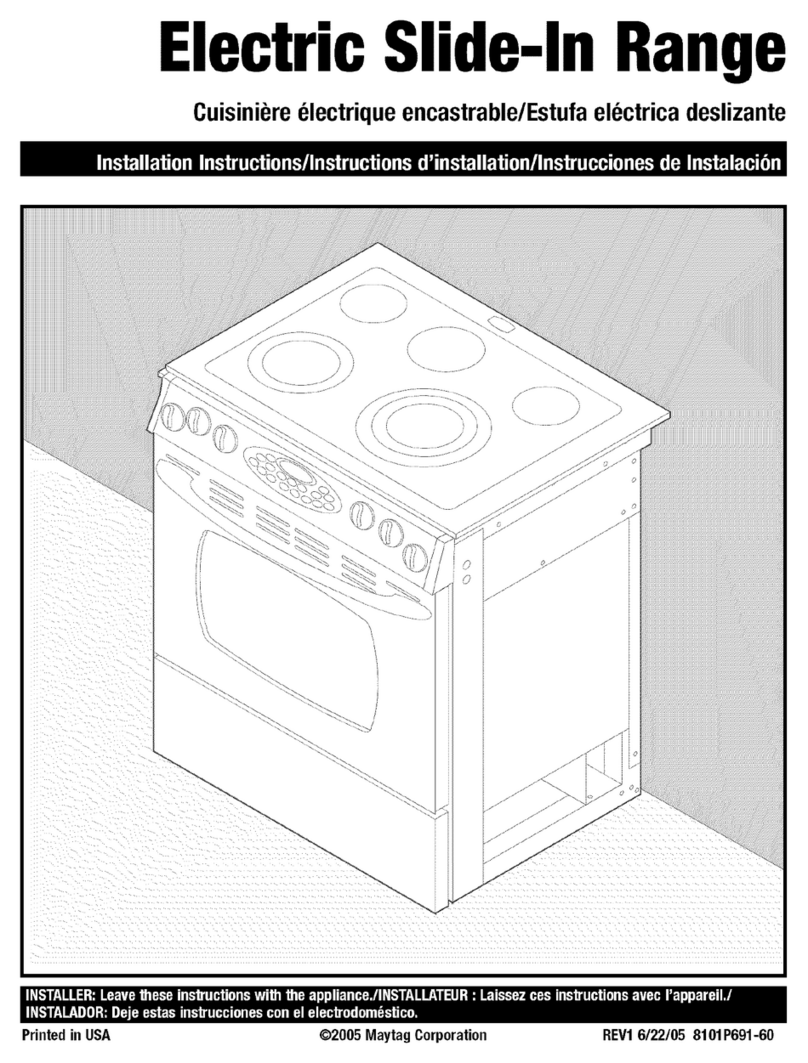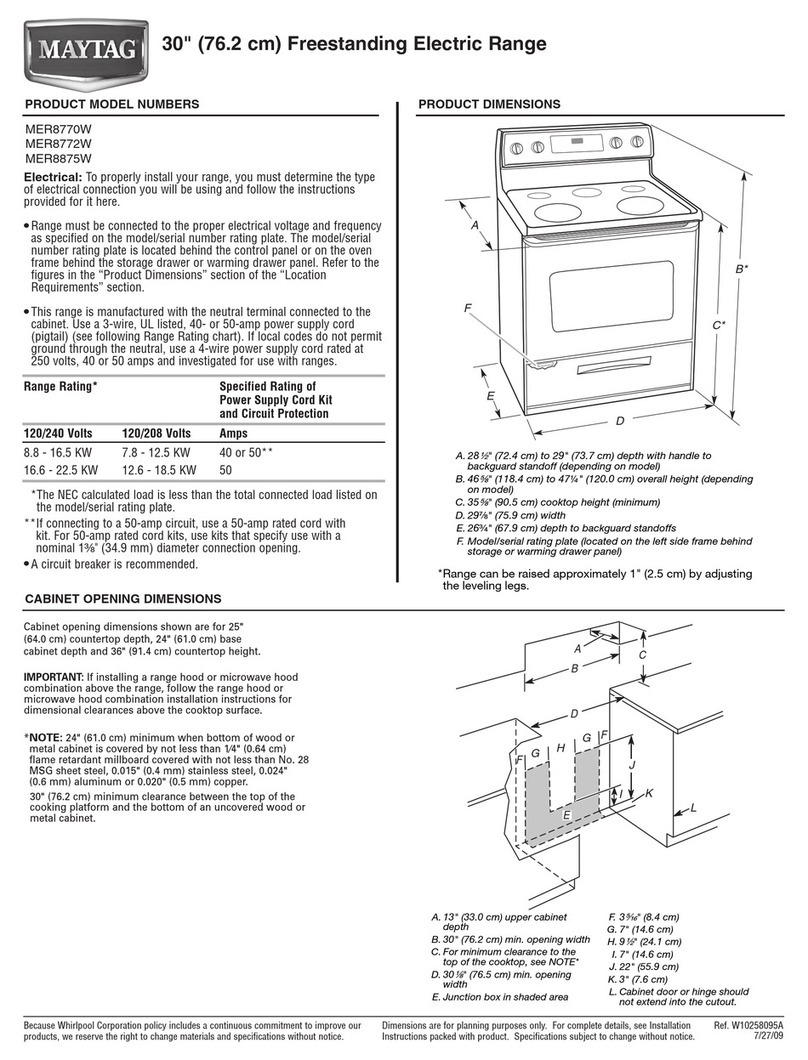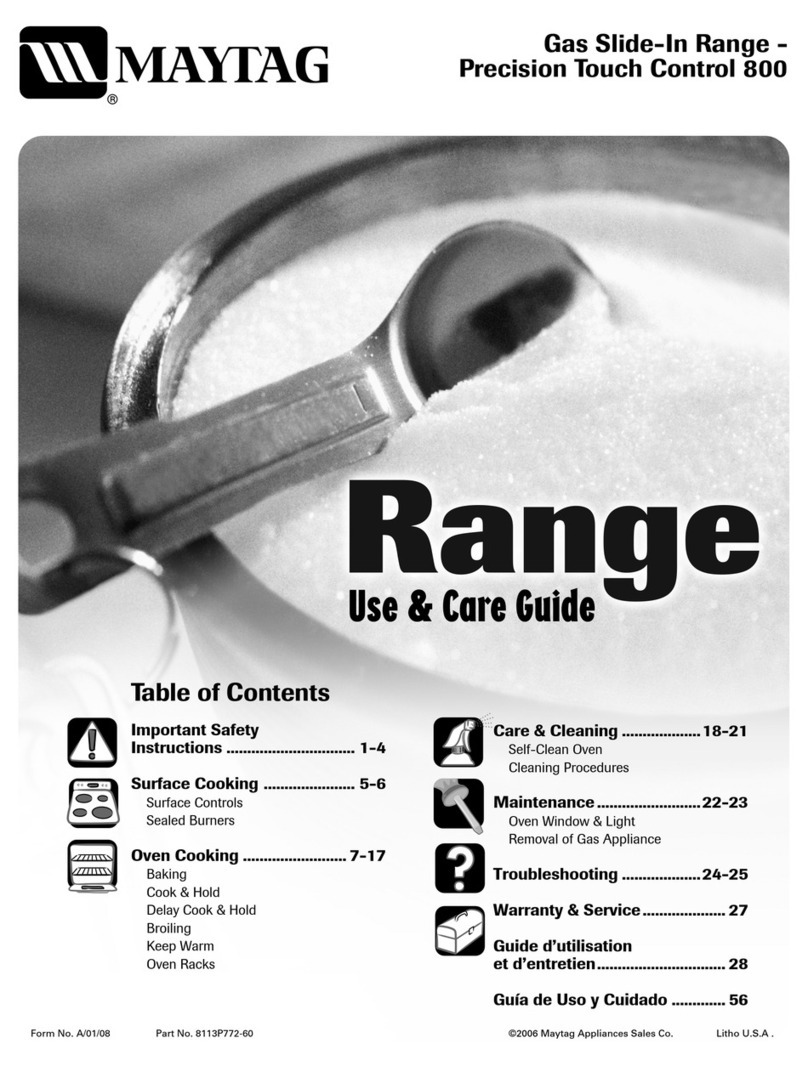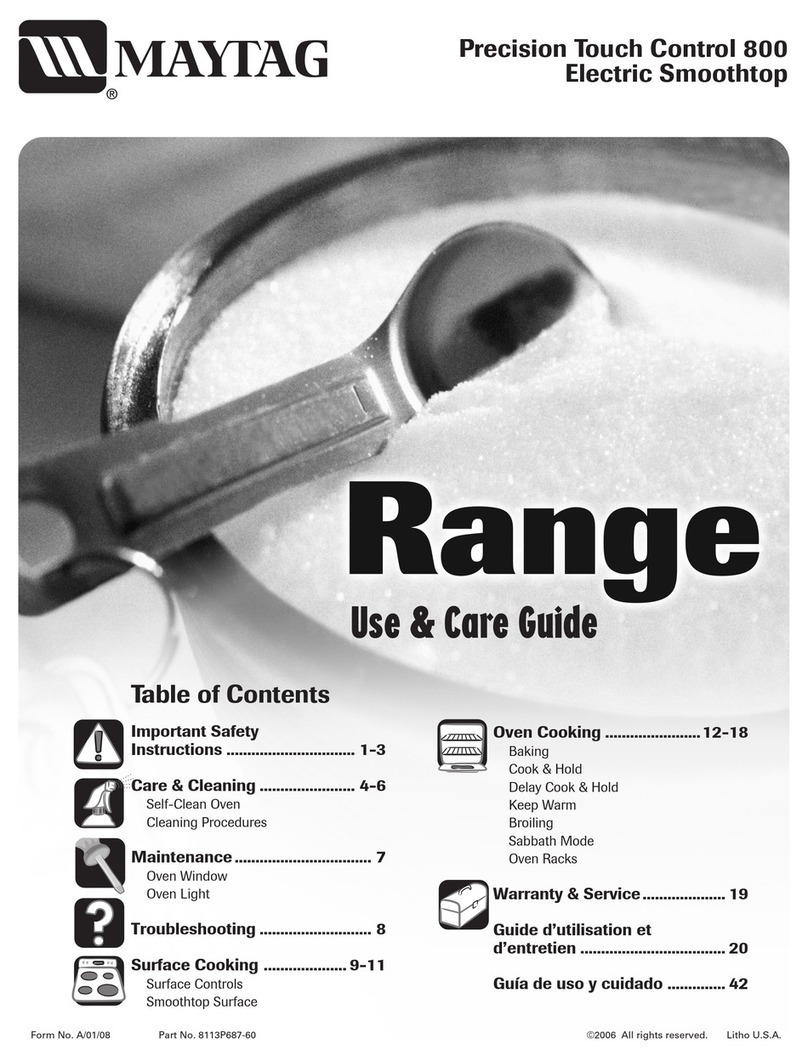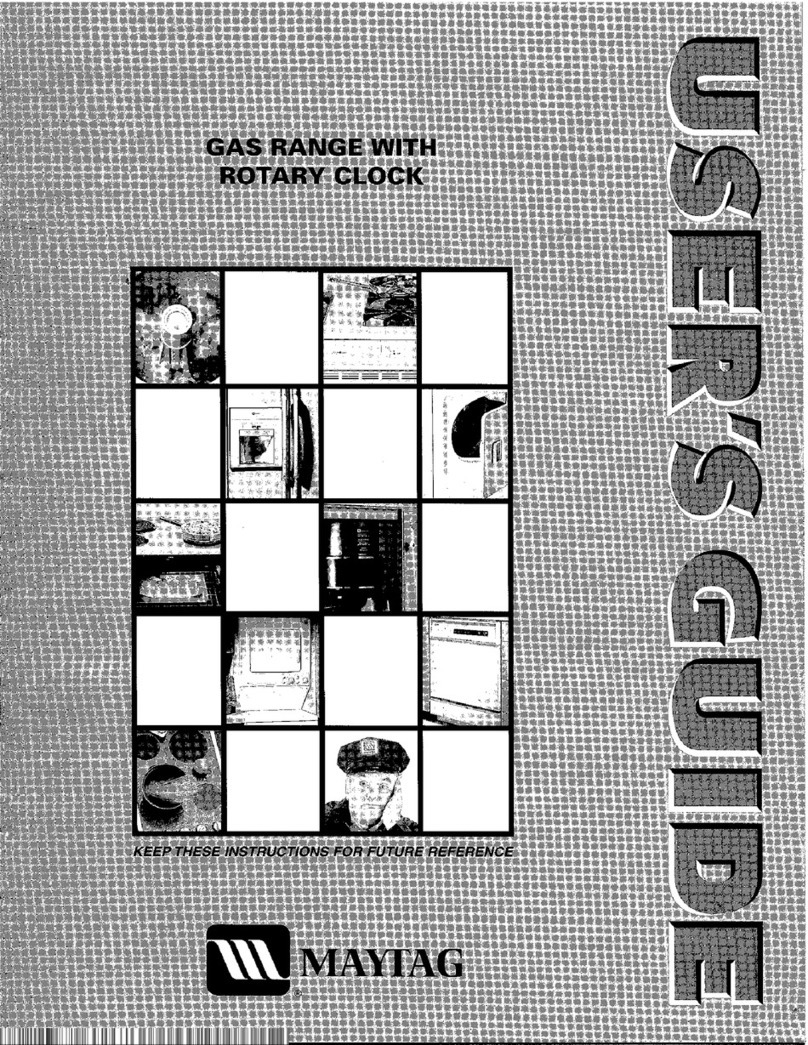
drenclimbingonappliance,doorordraw-
ertoreachitemscoulddamagetheappli-
anceorbeburnedorseriouslyinjured.
Childrenmustbetaughtthattheappliance
andutensilsinoronitcanbehot.Lethot
utensilscoolinasafeplace,outofreach
of smallchildren.Childrenshouldbe
taughtthatanapplianceisnotatoy.Chil-
drenshouldnotbeallowedtoplaywith
controlsorotherpartsoftheunit.
I(E
NEVER use applianceas a space heater
to heat or warm a roomto prevent poten-
tial hazard to the userand damage to the
appliance. Also, do not use the cooktopor
oven as a storagearea for foodor cooking
utensils.
Donotobstructthe flow ofcombustionand
ventilation air by blockingthe oven vent or
air intakes. Restriction of air flow to the
burner prevents proper performance and
increases carbon monoxide emission to
unsafe levels.
Avoid touching oven vent area while oven
is on and for several minutes after oven is
turned off.Some partsof the vent and sur-
rounding area become hot enough to
cause burns. After oven is turned off, do
not touch the oven vent or surrounding
areas until they havehad sufficienttime to
cool.
WARNING: NEVER use appliance door,
or drawer, if equipped, as a step stool or
seat as this may result in possible tipping
of theappliance, damagetothe appliance,
and serious injuries.
Do not touch a hot oven light bulb with a
damp cloth as the bulb could break.
Should the bulb break, disconnect power
to the appliance before removing bulb to
avoid electrical shock.
Other potentially hot surfaces include:
Cooktop, areas facing the cooktop, oven
vent and surfaces near the vent opening,
oven door, areas around the door and
oven window.
Always place a pan on a surface burner
before turning it on. Be sure you know
which knobcontrolswhich surfaceburner.
Makesure the correct burner isturned on
and that the burner has ignited. When
cooking is completed, turn burner off be-
fore removingpan to prevent exposureto
burner flame.
Always adjust surface burner flame so
that itdoes not extend beyondthe bottom
edge of the pan. An excessive flame is
hazardous,wastes energyand may dam-
age the appliance, pan or cabinetsabove
the appliance.
NEVER leave a surface cooking opera-
tion unattended especially when using a
high heat setting or whendeep fat frying.
Boilovers cause smoking and greasy
spillovers may ignite. Clean up greasy
spills as soon as possible. Do not use
high heat for extended cooking opera-
tions.
NEVER heat an unopened container on
the surface burner or in the oven. Pres-
sure build-up may cause container to
burst resulting in serious personal injury
or damage to the appliance.
Use dry, sturdy potholders. Damp pot-
holders may cause burns from steam.
Dishtowels or other substitutes should
never be used as potholders because
they can trail across hot surface burners
and ignite or get caught on appliance
parts.
Always let quantities of hot fat used for
deep fat frying cool before attempting to
move or handle.
Do not let cooking grease or other flam-
mablematerialsaccumulatein or nearthe
appliance, hood or vent fan. Clean hood
frequently to prevent grease from accu-
mulating on hood or filter. When flaming
foods under the hood turn the fan on.
NEVER wear garments madeof flamma-
ble material or loose fitting or long-
sleeved apparel while cooking. Clothing
may ignite or catch utensil handles.
Alwaysplaceovenracksin thedesiredpo-
sitionswhile oven iscool. Slide oven rack
outto add or remove food, using dry,stur-
dy potholders.Always avoid reaching into
the oven to add or remove food. If a rack
must be moved while hot, use a dry
potholder.Always turn the oven off at the
end of cooking.
Usecare whenopeningthe oven door.Let
hot air or steam escape before moving or
replacingfood.
PREPARED FOOD WARNING: Follow
food manufacturer's instructions.If a plas-
tic frozen food container and/or its cover
distorts, warps,or is otherwise damaged
during cooking, immediately discard the
food and its container.The food could be
contaminated.
NEVER use aluminum foil to cover oven
racks or oven bottom. This could result in
risk of electric shock, fire, or damage to
the appliance. Use foil only as directed in
this guide.
Use pans with flat bottoms and handles
that are easily grasped and stay cool.
Avoid using unstable, warped, easily
tipped or loose-handled pans. Also avoid
using pans, especially small pans, with
heavy handles as they could be unstable
and easily tip. Pans that are heavy to
move when filled with food may also be
hazardous.
Be sure utensil is large enough to proper-
ly contain food and avoid boilovers. Pan
size is particularly important in deep fat
frying. Be sure pan will accommodate the
volume of food that is to be added as well
as the bubble action of fat.
To minimize burns, ignition of flammable
materialsand spillagedue to unintentional
contact with the utensil, do not extend
handlesoveradjacent surfaceburners.Al-
ways turn pan handlestoward the side or
back of the appliance, not out into the
roomwhere they are easily hitor reached
by small children.
Never leta pan boil dryas this could dam-
age the utensil and the appliance.
